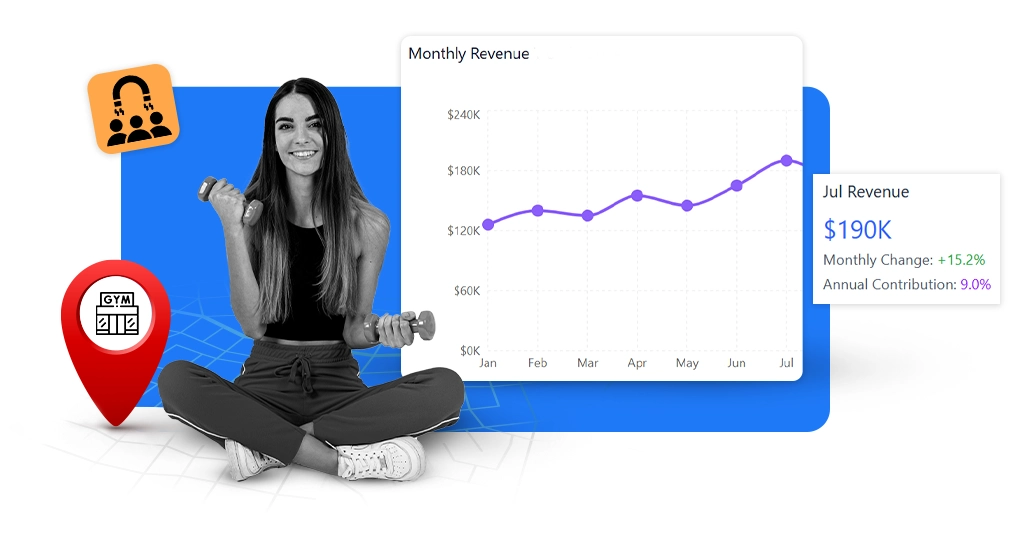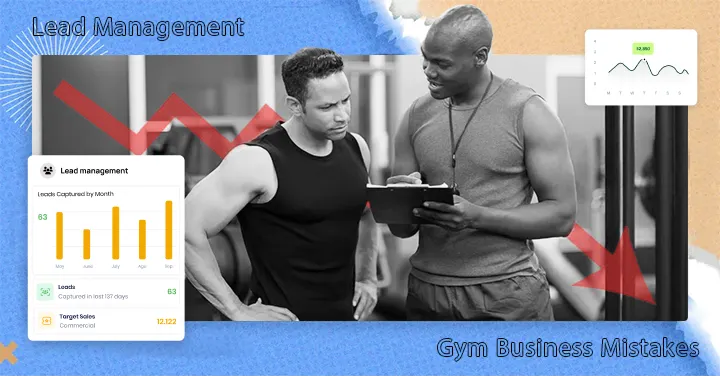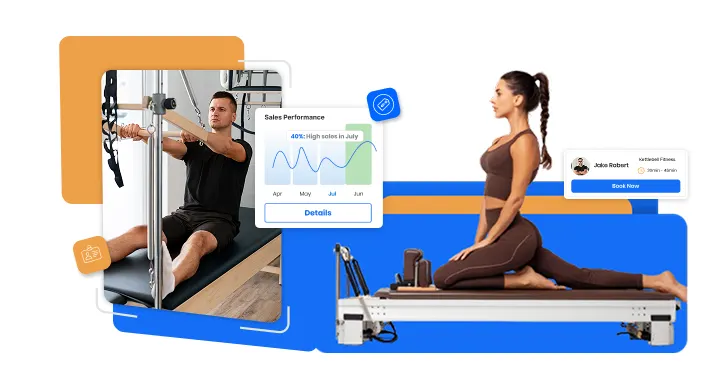The best time to open a second gym location is when your first gym is stable, profitable, and running smoothly without you to handle every detail. Expanding too early can hurt revenue and retention, but with the right timing, it can lift your business to new heights.
You already know what it feels like to build a gym from scratch. Long days, tough calls, and the joy of seeing members walk in and stay loyal. Now you’re at a point where the place is buzzing. Classes are full. Trainers are busy. Revenue feels steady. And there’s a question on your mind:
“Should you grow to a second location? Or should you wait?”
This question holds weight because the choice can either double your success or double your stress.
This blog takes you through the signs that you’re ready, the strategies to follow, and the challenges to prepare for. Real-world examples will show how other gyms succeeded or failed when they chose to expand. And you’ll see why using the gym management software is one of the smartest steps in making expansion work.
Why expansion needs more than excitement
Opening one gym was a big move. Opening two is even bigger. It’s not about copying the first location. It’s about building a system that can live without you. Statistics prove the risks are real. Around 20% of small businesses close within the first year, and 50% shut down within five years. Fitness businesses are no exception.
Expansion driven solely by excitement can backfire. For growth to succeed, you need more than ambition. You need profit, member loyalty, and a clear, well-thought-out plan. Without these, a second location can bleed money instead of boosting it. A clear plan is your roadmap to success, guiding you through the challenges and ensuring your decisions are strategic and sound.
Signs you are ready for a second gym
The first and strongest sign is consistent profit. If your first gym has been profitable for more than a year, it shows stability. That profit becomes the fuel for your second gym.
Another sign is high demand. If your classes are full and members keep asking for more space. It may be time. IHRSA reports that 62.5 million Americans had health club memberships in 2022, and demand keeps growing worldwide. Meeting this demand before competitors do can put you ahead.
Distance is another signal. If many of your members travel far, a second gym closer to them can increase retention. It can also attract new people who would never travel to your first gym.
How F45 grew with careful timing
Take F45, the global fitness chain. It started in Australia with one location and only expanded after building a repeatable system. They focused on consistency, technology-driven workouts, and strong branding before opening more gyms.
That strategy worked by 2021, F45 had over 1750 studios across 53 countries. Their lesson: scale only when systems are strong and ready to copy.
Financial planning matters most
Expansion costs more than most owners think. Leasing, renovations, salaries, marketing, and equipment add up first. Reports from Club Industry show that starting a mid-sized gym can cost between $200,000 and $500,000. That’s a big sum, even for a second location.
Cash reserves are critical. Experts suggest having at least six months of operating expenses saved. This helps you handle slow months or delays in turning a profit. If your savings are thin, you risk putting your first gym in danger while trying to grow the second.
Building a team that can run without you
Your first gym may thrive because you’re there every day. But you can’t be in two places at once. That’s why leadership matters. You need managers and trainers who share your vision and can carry the culture you built.
Gallup research shows that businesses with engaged employees are 21% more profitable. A motivated team ensures your second gym feels just as welcoming and inspiring as the first. Without that, the second location may feel like a weaker version, and members notice.
The rise and fall of 24 Hour Fitness
24 Hour Fitness once grew rapidly, reaching over 400 gyms in the U.S. But during the COVID-19 pandemic, cracks showed.
The company filed for bankruptcy in 2020, citing over-expansion and high operating costs. The lesson here is clear: growth without sustainable systems and financial buffers can become a heavy burden.
Why retention matters more than revenue
Revenue looks exciting, but retention is what tells you if your gym is truly ready. If members keep renewing, it means you’ve built loyalty. Harvard Business Review states that keeping a member is five times cheaper than getting a new one.
If retention is weak, adding a second gym only multiplies the problem. A second location won’t fix poor engagement. In fact, it will drain more money and energy. Owners who focus on retention, through community, personal touch, and smooth systems, carry that success to every location they open.
How technology makes scaling easier
Managing one gym is tough. Two gyms can feel overwhelming. Schedules, payments, staff, and member data double overnight. That is why gym management software becomes vital. This software allows you to manage all aspects of your gym from one platform. You can see both gyms on one dashboard, track revenue, bookings, attendance, and staff hours from anywhere. Automation reduces errors and saves time.
With the right system, you can see both gyms on one dashboard. You can track revenue, bookings, attendance, and staff hours from anywhere. Automation reduces errors and saves time.
More importantly, members feel the difference. A person who signs up at one location should be able to book classes at the other without issues. That level of flexibility builds loyalty and makes your brand stronger.
Marketing the second location
Opening a second gym is not just about putting up new walls. You need to market it well. Build awareness before opening day. Share updates on social media, show behind-the-scenes progress, and offer sign-up specials.
Data shows that 54% of people check social media when looking for brands. That means your presence online matters as much as the gym itself. Local partnerships also help. Work with nearby cafes, sports shops, or wellness coaches to spread the word.
Challenges you’ll face
Staffing is often the hardest. Finding skilled trainers and managers takes time. If you rush, you may hire the wrong people, and that hurts culture and service.
Financial risk is another challenge. Even with planning, things happen: repairs, delays, or slower-than-expected sign-ups. Flexibility and cash reserves help you weather these storms.
Consistency is the third challenge. Members expect the same level of cleanliness, energy, and support in every gym. Without clear systems, one gym may shine while the other struggles.
Planet Fitness
Planet Fitness expanded by focusing on one clear target: casual gym-goers who want affordability and a judgment-free space. By sticking to their model, they grew to more than 2,000 locations. Their example shows that consistency across locations keeps the brand strong and trusted.
Growing for the long term
It’s tempting to rush expansion when the first gym is successful. But sustainable growth is better than fast growth. Opening too soon can lead to burnout and debt.
Waiting until your systems, savings, and staff are ready may feel slow, but it builds a stronger foundation. Expansion should be about creating something that lasts, not chasing quick wins.
Final Thoughts
Opening a second gym can boost both revenue and retention, but only if the timing is right. Profitability, strong retention, member demand, and a solid team are the signs that show you’re ready. Real-world examples prove that gyms succeed when they build systems first and fail when they rush expansion without planning.
Growth is not just about numbers. It’s about people, culture, and systems. With the right gym management software, scaling becomes smoother, giving you the tools to manage multiple locations with confidence.
If you’re planning to expand, GymRoute is your growth partner. With one simple dashboard, you can manage memberships, track revenue, and connect every location seamlessly.
GymRoute helps you scale smart, keeping your gyms consistent and your members happy.






